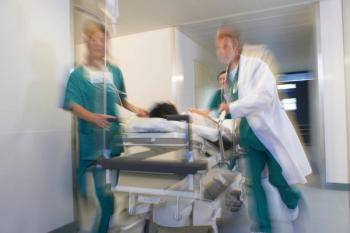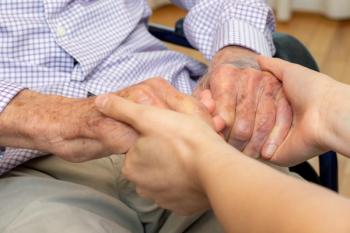
How ‘The Pitt’ delivers a realistic view of a hospital: ‘They’re doing it right’
The HBO Max series received 13 nominations and enjoys a big audience. Healthcare leaders say the show's producers consulted clinicians to ensure authenticity.
Since “The Pitt” debuted earlier this year, the series has emerged as a big hit with critics and audiences.
The series received 13 nominations for Emmy Awards earlier this week. The drama has also become one of the three most-watched HBO Max titles ever, the
“The Pitt” depicts life in an emergency room at a fictional Pittsburgh hospital, and some scenes were filmed at Allegheny General Hospital in Pittsburgh. Doctors and nurses have advised the producers, and the show has succeeded in accurately depicting a busy emergency department in a big city, says Dan Laurent, senior vice president of corporate communications at Highmark Health.
“I think they're getting it absolutely right,” Laurent tells Chief Healthcare Executive®.
Laurent says he’s especially encouraged that doctors and nurses have praised the realism of the series in media coverage of the show.
“Those urban trauma center ERs are very busy places, and can seem sort of chaotic at times. But there’s structure behind that chaos, and those teams are incredible in how they manage to triage the patients coming in and really perform heroic work, and saving lives in the midst of all of that chaos. It's really impressive,” Laurent says.
(See more on making "The Pitt" in this video. The story continues below.)
When the producers requested permission to shoot some scenes at Allegheny General, they said they wanted to present an honest and accurate look at a trauma center. Laurent says that was critical in Highmark, Allegheny General’s parent organization, agreeing to participate.
“I think they delivered on everything that they promised us in those initial conversations,” he says. “And so we were extremely gratified that it really did turn out how they had portrayed it in their minds and really delivered on the product.”
Doctors and nurses have heaped praise on the drama.
Dr. Nicholas Cozzi, director of emergency medical services at Rush University Medical Center in Chicago, wrote in
“The show offers audiences a raw glimpse into a health care system on the brink,” Cozzi wrote. “It shines a light on complex, urgent issues—hospital boarding, limited resources, and the mounting toll of trauma and mass casualty events—that affect both patients and the people working tirelessly to save them.”
Several doctors and the nursing director in Allegheny General’s emergency department worked with the production team before shooting to ensure details in the scripts were accurate, Laurent says.
Most of the series is filmed in Los Angeles, but the producers came to Allegheny General for three long days to shoot a host of scenes.
During filming of a scene at Allegheny General involving the arrival of a patient who had an overdose, Laurent says one of the hospital’s emergency department physicians was on the set the whole time to advise on how such a patient would be treated “to make sure they got it right.”
“They've been incredibly meticulous in putting this program together,” Laurent says. “So I have to give a lot of credit to the production team and to Warner Brothers. They're getting it right because they're doing it right. They're engaging with the clinicians who provide care in a setting to make sure that that the language they're using is accurate and the care that they're providing is accurate.”
The series shines a spotlight on the doctors and nurses who work in emergency departments, their dedication, and the strain that comes with those jobs.
“There's no question, it's hard work,” Laurent says. “It's hard work in any clinical setting these days, let alone an emergency department where anything and everything comes through those doors. These caregivers not only have to have the expertise, but the stamina and the compassion to get through their day and do such great things for these patients.”








































